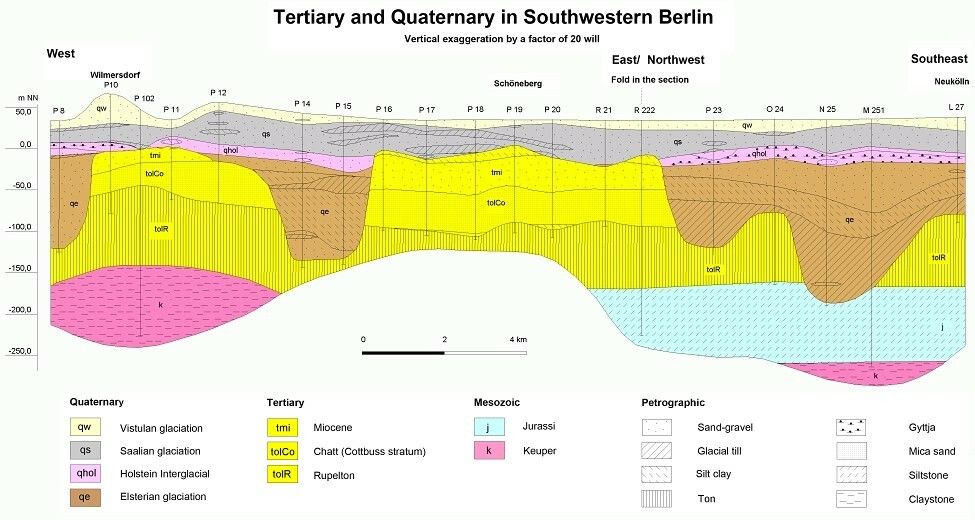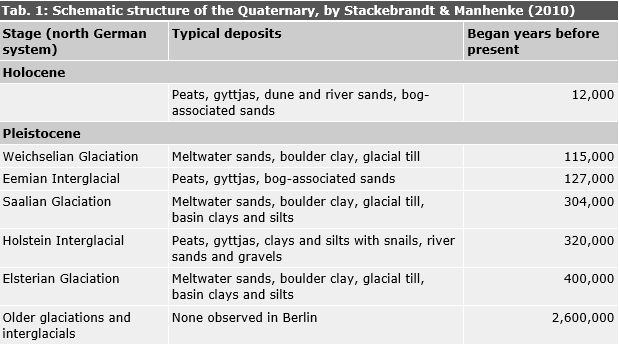Geological overview of Tertiary and Quaternary formations
The earth’s surface and the near-surface segment in the area of the city of Berlin were formed by deposits during the Tertiary, the Pleistocene and the Holocene, with the tertiary and quaternary sediments having a certainly decisive significance for the life of the city. For instance, all the water from the public water supply system comes largely from the Quaternary and to some extent from the tertiary groundwater aquifers. Some 90% of the groundwater used in Berlin is withdrawn within the city limits.
The Tertiary
The Tertiary, also known as the Lignite Era, began 65 million years ago, at the end of the Cretaceous period and ended at the beginning of the Quaternary, some 2.6 million years ago.
Sediments from the Tertiary are found in Berlin in a discordant pattern, with a time gap, above older strata of material from the Cretaceous, Jurassic or Keupers eras, and constitute a virtually complete underlying, older level beneath the quaternary strata (Figure 3). In areas of deeper quaternary erosion, such as e.g. in sections of quaternary removal zones (tunnel valleys), tertiary deposits are entirely missing. Tertiary sediments constitute the surface layer at only one site in Berlin, in Lübars.
The clayey/silty rupelton, which is some 80 m thick, has a particular position within the tertiary layer. Due to its very broad dissemination, it is not only an important geological guide horizon within the covering hills from the Tertiary and Quaternary, it is also of considerable hydrogeological significance, since its constitutes a barrier between the saltwater in the underlying stratum and the freshwater in the younger, covering strata. In areas in which rupelton strata are partially or completely absent due to quaternary erosion, dissemination pathways, in some cases extending to the surface, were created for the rise of mineralized deep water, and for its spread into the freshwater strata (Figure 3).




